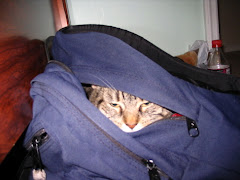
Oprah has her own book club, so why shouldn't your kids have their own? With the new school year getting in gear, it's a good time to show kids that reading for pleasure can be a reward for hard work in the classroom. It's also a fine way to open young minds to new ideas, and get them to share their ideas with other kids. From the ReadWriteThink website, here are some online guides on starting book clubs for kids and young adults.
Web Resources
Global Book Club
Global Book Club is a collection of book reviews and resources for middle school students. More sophisticated readers may find this site useful.
Tips on Starting a Book Club
Tips on Starting a Book Club provides questions which can help groups make basic decisions about what their group will do. You might edit this site's list of questions to customize it for the specific needs of your children.
Book clubs should be a voluntary, student-centered activity. Reading should not be evaluated in the traditional way. If book club members join in a "lunch bunch" meeting, you can rely on kid-watching to note how students are developing as readers; but there should be no formal assessment. "Lunch bunch" meetings should be voluntary, not required. The meetings are an "extra" to encourage students' independent reading and chatting about the books. If kids keep a reading portfolio or reading log, you should encourage, but not require, students to write about their book club readings in these as well. You may provide a form for reading portfolios to simplify record-keeping for students.
The Alchemyst: The Secrets of the Immortal Nicholas Flamel, Book 3 by Michael Scott

The Forest of Hands and Teeth by Carrie Ryan
Ghost Huntress Book 1: The Awakening by Marley Gibson
North of Beautiful by Justina Chen Headley
Parties and Potions by Sarah Mlynowski
The Real Real by Emma McLaughlin and Nicola Kraus
Slept Away by Julie Kraut
Suite Scarlett by Maureen Johnson
Swim the Fly by Don Calame
Wings by Aprilynne Pike.
New books from National Geographic
 From Curtis Silver at GeekDad in Wired magazine, here are some new books from that look interesting enough for adults to peek at over a kid's shoulder!
From Curtis Silver at GeekDad in Wired magazine, here are some new books from that look interesting enough for adults to peek at over a kid's shoulder! Recently I received an armload of books from National Geographic. These weren’t heavy manuscripts detailing the history of the world or simple picture books - these were kids books! For kids! Being from National Geographic, they were also heavy on the education and learning aspects of reading. This is a good thing. While I got quite the assortment of books for toddlers through teens, this post I’m highlighting some of the best ones to read to or with your little ones.
The Bones You Own, Becky Baines (National Geographic, Washington D.C.) and What’s in That Egg, Becky Baines National Geographic, Washington D.C.) These two books are about what is inside things we take for granted, and especially children take for granted. The Bones You Own looks inside your body with a creatively entertaining style of crayon drawings over pictures of children in activity. It even goes inside the bone on a set of pages, explaining that “your bones are white, smooth and strong with jelly in the middle.” There is even a picture of a child on the page giving a slightly disgusted look. These kinds of illustrations keep the book on the lighter side. At the end of the book, there is a collection of questions for the parent to answer with their child. Questions that children tend to ask like, “Most bones are in your hands and feet. Can you think why?”










I have just release my new fantasy novel, "Gateway to DreamWorld." I would love to get a review from you on the book. The book has been listed on Amazon.com and Barnes&Nobles.com Synopsis: On their way home from baseball tryouts, Brad Colby and his two sons are involved in a terrible car accident that leaves six-year-old Pete in a coma. When Pete awakens, the family is crushed to learn that he is paralyzed. Meanwhile, Pete’s eight-year-old brother, Jason, has been having powerful dreams that lead him to a mysterious realm known as DreamWorld. Jason discovers that all of his desires can come true in DreamWorld, but the time is fast approaching when he will have to choose between his two worlds. And when more devastating news strikes at the heart of the Colby family, Jason and Pete set out on a desperate attempt to find the Gateway to DreamWorld and save their family. With time running out on their dangerous path, will Jason and Pete’s fear of the Unknown keep them from reaching the paradise of their dreams? Brenda
ReplyDelete